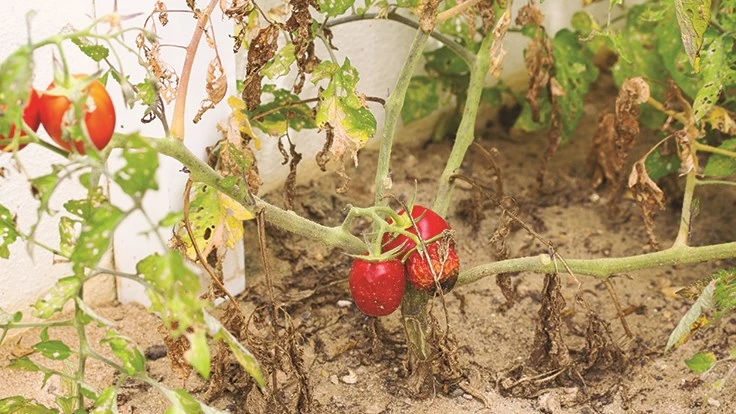

A blog that posts regularly keeps your business front and center, answers your customer’s questions and positions your IGC as the go-to source for expert knowledge. But let’s face it, writing a weekly blog post can be nearly impossible in your busy season. Faced with trucks to unload, customers to help, and plants to condense or water, updating a blog often slips to the bottom of the to-do list.
January can be the perfect month to solve this problem. For many IGCs, it’s a slow month, and with a bit of planning, you can get several months worth of blog posts written and ready to launch. Most blog platforms such as Wordpress allow you to schedule publishing in advance. Instead of clicking on “publish,” you choose “schedule” in the menu on the right-hand side. You’ll be able to pick a publishing date weeks or months into the future.
Planning
The first step in your planning is to make a month-to-month list for weekly posts. Planning for these to go up on a Thursday makes sense because it’s in advance of the weekend, when many of our customers shop. If that’s the day of the week you’ve chosen, mark down all Thursdays in each month from January through August.
Next is plugging in a subject for each of these weeks. This can begin by filling in problems that you know are typical in each of those months. In my area, for example, crabgrass seed germinates in April, gypsy moth larvae are eating foliage in late May and June, and black spot starts defoliating roses in July. So, I would begin by filling topics such as these into my calendar at the appropriate times.

Topics
After you’ve assigned common pests and problems a date, move on to the questions that you hear repeatedly. In my area, an annual post on “How do I prune my hydrangeas?” is always a favorite, as are questions about plants that don’t bloom and lichen on trees. Think of your customers’ most frequently asked questions and assign each of those a date in the calendar.
If there are still dates to fill, posts about great plants or products are always good. Based on past years, you might know that your four-inch heirloom tomato plants arrive in early May, for example, or that you have the best selection of daylilies in June, so a blog post about those plants will alert your customers to come in during those times.
Once you have your calendar of topics, you can write three or four blog posts a day in January until you have several months’ worth of posts up and scheduled to launch at the appropriate times. Keep in mind that a blog post doesn’t need to be very long. In fact, shorter is usually better. Think of it as a quick conversation with your customers, giving them just enough information to solve their problems or keep them informed. Three to five paragraphs is a good length.
Titles
Give your blog posts a title that reflects what the customer wants to know. I gave a Hyannis Country Garden blog post the title of “Hydrangea Problems” several years ago, and that post continues to be seen on the first page of Google searches using those words. Many people search online by asking a question, so these also make good titles. “How to Keep a Poinsettia Alive,” “What is Eating My Roses?” or “What Makes Tomato Leaves Turn Yellow?” are just three examples.
llustrationsA good blog post should have at least one photograph. If you commonly take photos with your phone through the season, you can go through your library and choose an appropriate picture. In fact, sometimes a great photo will provide the topic for a post. Did you take a great shot of last year’s herb display? Use that in a post about herbs. If you don’t have a photo of the problem or pest that you’re writing about, take a photo of the products that you recommend as solutions.
There are other sources of illustrations available; many plant companies will provide free photos of their plants upon request. There are also stock photo houses where you can purchase photos, but note that sometimes plants pictured are mislabeled or of unnamed varieties. And when it comes to illustrations, ask your employees if they have snapped pictures of their plants and gardens recently. You might find that you have your own “stock photo library” in house.
Once you have a blog scheduled for each Thursday through your busy season, you are then free to set up additional posts earlier in the week if time allows. But if say, the entire month of May slips away, there’s no problem! The posts you wrote and scheduled in the winter will be germinating and growing all on their own.
 | The Garden Center Conference & Expo, presented by Garden Center magazine, is the leading event where garden retailers come together to learn from each other, get inspired and move the industry forward. Be sure to register by April 17 to get the lowest rates for the 2025 show in Kansas City, Missouri, Aug. 5-7.
|

Explore the December 2017 Issue
Check out more from this issue and find your next story to read.
Latest from Garden Center
- Boxed in: 2025 Axiom Gardening Outlook Study explores big box vs IGCs
- The Growth Industry Episode 3: Across the Pond with Neville Stein
- Trends: Proven Winners 2025 perennial survey shows strong demand
- Online registration opens for the 2025 Farwest Show
- Sustainabloom launches Wholesale Nickel Program to support floriculture sustainability
- Society of American Florists accepting entries for 2025 Marketer of the Year Contest
- American Horticultural Society welcomes five new board members
- Color Orchids acquires Floricultura Pacific, becoming largest orchid supplier in U.S.






